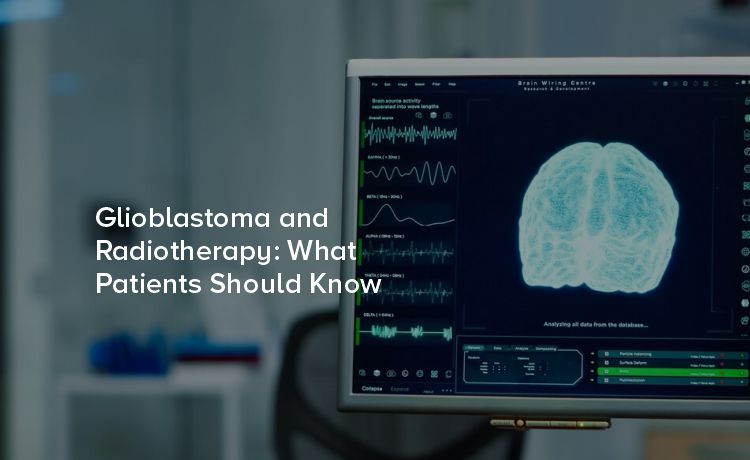
Glioblastoma is one of the most aggressive forms of brain cancer. Often, the diagnosis comes as a shock to patients and their families. However, knowing more about the treatment options, particularly radiotherapy, can offer a sense of control and hope.
Glioblastoma, or GBM, is a type of brain cancer that originates in the glial cells. These cells support nerve cells in the brain. Unfortunately, glioblastoma grows rapidly and is highly malignant.
Glioblastoma is known for its aggressive nature. It infiltrates surrounding brain tissue, making it difficult to remove entirely through surgery. This invasive behavior is why it requires a multifaceted treatment approach.
Common symptoms include severe headaches, nausea, vomiting, and seizures. Patients may also experience cognitive and personality changes, depending on the tumor's location.
Diagnosing glioblastoma typically involves imaging tests like MRI and CT scans. A biopsy is often needed to confirm the diagnosis and determine the tumor's genetic makeup.
Radiotherapy, or radiation therapy, uses high-energy particles to destroy cancer cells. It is a standard treatment for glioblastoma, often used in conjunction with surgery and chemotherapy.
Radiotherapy targets the DNA of cancer cells, preventing them from multiplying. Over time, this leads to the shrinking of the tumor. While it affects both healthy and cancerous cells, healthy cells have a better ability to repair themselves.
There are several types of radiotherapy, including external beam radiation therapy (EBRT) and stereotactic radiosurgery (SRS). Each has its advantages, depending on the specific case.
Timing and Duration of Treatment
Radiotherapy usually begins a few weeks after surgery. The typical course lasts about six weeks, with treatments five days a week. This schedule allows for recovery of normal cells between sessions.
Preparing for Radiotherapy
Preparation is crucial for the effectiveness of radiotherapy. A multi-disciplinary team, including oncologists, radiologists, and nurses, will guide patients through this process.
During the initial consultation, the medical team will explain the treatment plan, including potential side effects and scheduling. This meeting is an excellent opportunity for patients to ask questions and address any concerns.
Before starting treatment, a simulation session through CT scan and MRI is conducted to map out the exact location of the tumor. This ensures that radiotherapy targets the cancer cells precisely, minimizing damage to surrounding healthy tissue.
Facing radiotherapy can be daunting. It's essential to seek support from family, friends, and mental health professionals. Many patients find comfort in joining support groups where they can share experiences and coping strategies.
Understanding what happens during each session can alleviate some of the anxiety associated with treatment.
The Treatment Room
Radiotherapy is typically administered in a specialized room equipped with a linear accelerator. The machine rotates around the patient to deliver radiation from different angles.
The Procedure
Patients lie on a treatment table, and immobilization devices may be used to keep them still. The process is painless and usually lasts around 5-10 minutes.
Post-Treatment Care
After each session, it's crucial to rest and stay hydrated. Some patients may experience fatigue or mild skin reactions. These side effects are usually temporary and manageable.
Like all treatments, radiotherapy comes with potential side effects. However, not everyone will experience them, and they can vary in severity.
Short-Term Side Effects
Common short-term side effects include fatigue, skin irritation, and hair loss in the treated area. Nausea and headaches may also occur but can often be managed with medication.
Long-Term Side Effects
Long-term side effects are less common but can include changes in cognitive function and memory. Regular follow-ups with the medical team can help monitor and address these issues.
Managing Side Effects
Communication with the healthcare team is vital. They can provide medications, nutritional advice, and other strategies to manage side effects effectively.
Follow-up care is critical in the management of glioblastoma and ensuring the ongoing effectiveness of treatment.
Regular Check-Ups
After completing radiotherapy, patients will have regular check-ups, including MRI scans, to monitor for any signs of tumor recurrence.
Rehabilitation Services
Rehabilitation services, such as physical therapy, occupational therapy, and speech therapy, can help patients regain function and improve their quality of life.
Psychological Support
Dealing with glioblastoma is emotionally challenging. Continued psychological support can help patients and their families cope with the stress and emotional toll of the disease.
Advances in technology are continually improving the effectiveness of radiotherapy for glioblastoma patients.
Precision Medicine
Precision medicine tailors' treatment based on the genetic makeup of the tumor, leading to more effective and targeted therapies.
Combination Therapies
Combining radiotherapy with other treatments, such as immunotherapy and targeted therapy, is showing promising results in clinical trials.
Navigating the complexities of glioblastoma and its treatment can be overwhelming. However, understanding the role of radiotherapy, preparing adequately, and knowing what to expect can make the journey more manageable.
Read More- Understanding Glioblastoma: Causes, Symptoms, and Diagnosis